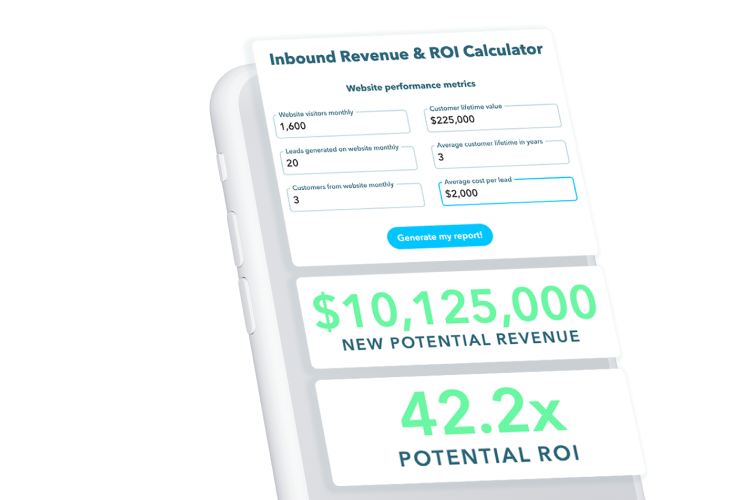 661 Views
661 Views  4 min read
4 min readIn a rapid-paced Patient Engagement and Education market, consistent customer procurement is essential to survival. Among the most effective and cost-efficient methods of getting consumers is with a brand-new approach called ‘Inbound’ marketing and sales. This includes developing and leveraging beneficial and targeted content to bring in potential customers to your website, nurturing them right into leads, and then turning them into clients. Inbound marketing and sales have been proved to create much better outcomes compared to traditional techniques like print marketing, television and radio ads, electronic ads, email blasts, cold calls, trade shows, and buying lists. According to current Hubspot research, 92% of B2B businesses claimed that they get more website traffic and leads using inbound strategies. Getting brand-new healthcare provider accounts takes effort and commitment, and the Inbound approach could help your key decision makers and influencers accelerate the process. Below are some leading Patient Engagement and Education customer purchase strategies capitalizing on the Inbound technique:
The first step to customer acquis ion is to identify your ideal customer. Take time to develop Buyer Personas (imaginary depictions of your perfect customer) such as ‘Private Practitioner Peter’ or ‘Medical Director Derrick’. Do some research to discover more about them. What are their duties at their job? What are their goals? What difficulties do they deal with in the office? How do they make decisions? How do they get their info? Having this information will help make it less complicated to target them with your content. Then, establish your own inbound strategy or look for help from professionals. An effective strategy includes clear buyer personas, a map of their Buyer’s Journey, substantial SEO keyword research, content planning, and a marketing plan for social media and email lead nurturing.
Developing high-quality content on a consistent basis will keep your target market engaged and position you as a specialist in the sector. Enhancing your content using keywords will increase your search engine position and make it easier for customers to find you online. There are various types of content that could be helpful for customer acquisition. Blogs: Research by Hubspot found that companies that post more than 16 blogs every month had 3.5 times more web traffic compared to those who posted four times or less. Your blogs should cover topics that would be helpful to your target market. Develop a blogging schedule and stick to it. If you do not have the moment to create, you might hire a freelance writer or firm that concentrates on content production. Webinars: A webinar provides you the chance to share your experience with leads in an interactive online forum. You can reply to questions in real time at the end of the webinar. To get even more out of it, consider including a marketing influence as a guest speaker. eBooks: Long-form content like ebooks are great for covering topics from your blog in a more extensive way. This will place you as a specialist and with the trust of your target market. You could develop a landing page where site visitors could give their contact information to get your eBook. Use the emails to nurture your new leads until they convert to customers. Case studies: Most individuals look for evidence of your product and services advantages before buying. They want to know for certain that what they are buying will meet their needs. You can produce case studies that include your previous customers’ experiences. Talk about how your services helped fix their issues and what the outcomes were. For example, you might say that the customer’s sales increased by 70% in six months.
A call-to-action (CTA) is a message or graphic that tells visitors exactly what they should do. Site visitors need to understand what they will get when they click the CTA, which links to your landing pages, like “Download the ebook now,” or “Join our email list.” These are both great examples that demonstrate urgency to the user. Work with your design team to place the CTA “above the fold” to allow your site visitors to see it without scrolling. Make sure the buttons are visible and can view them on mobile phones. If your landing page is long, you should include a second CTA in the middle, and a third at the end of the page.
The landing page is one of the most neglected parts of the customer acquisition process. This is the page where your site visitors come after clicking your call-to-action. The page should include a “contact us” section, signup, or product page. Make sure your landing pages have an engaging heading, a good value proposition, and some social proof. It should also have an engaging picture and effective call-to-action for more from your Patient Engagement and Education website. Research by Switch Video found that having a demo video on your landing page could enhance your conversions by 10-20%. Additionally, you can use screenshots of your content. Keep in mind to use keyword phrases that will bring in more organic traffic and remove navigational options, which could entice your visitors to click off that page. Using color physiology could also be great for getting visitors to take action.
Getting new customers could seem like a tough job when you have limited resources and when typical sales and marketing techniques have failed you. With Inbound marketing and sales, you could establish strategies and execute a lasting process of continually getting new site visitors, leads, and then clients. We’ve worked with several CEOs and Managing Directors to integrate Inbound Methodology right into their marketing and sales group’s procedures. Do not hesitate to schedule your free strategy session. We could help you review your properties and get beneficial understandings and strategies to get brand-new Patient Engagement and Education customers before your competitors!
